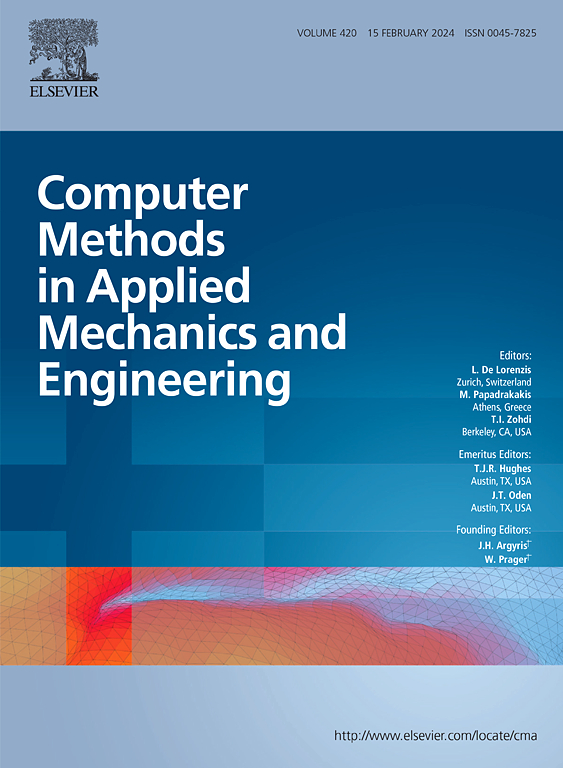RoePINNs: An integration of advanced CFD solvers with Physics-Informed Neural Networks and application in arterial flow modeling
IF 6.9
1区 工程技术
Q1 ENGINEERING, MULTIDISCIPLINARY
Computer Methods in Applied Mechanics and Engineering
Pub Date : 2025-03-25
DOI:10.1016/j.cma.2025.117933
引用次数: 0
Abstract
The characterization of forward and inverse problems describing blood flow dynamics plays a decisive role in numerous biomedical applications. These systems can be modeled using one-dimensional (1D) approaches leading to a hyperbolic system of equations with source terms. Their numerical discretization, associated to the spatial variation of mechanical and geometrical properties, requires advanced numerical solvers that ensure both stability and an accurate description of the dynamics of the system. In this work, we present RoePINNs, a hybrid framework for the embedding of advanced Computational Fluid Dynamics (CFD) solvers into Physics-Informed Neural Networks (PINNs), and give examples of application to Burgers’ equation as well as the propagation of nonlinear waves in elastic arteries, both under the presence of geometric-type source terms, for forward and inverse problems. We demonstrate that Augmented Riemann solvers can be incorporated into the PINN framework with straightforward adjustments to the hyperparameters, providing a promising alternative to automatic differentiation (AD), especially in cases where the solution exhibits strong nonlinearities and physical constraints are required. Benefits of the proposed RoePINN compared with the vanilla PINN based in AD are twofold: on the one hand, this hybrid approach employs numerical differentiation by means of support points in the surroundings of the collocation points, hence the robustness, generalization capacity and tunability of the PINNs are, in most cases, largely enhanced. On the other hand, the RoePINN incorporates the numerical solver, hence it is also capable of capturing sharp discontinuities with an order-of-magnitude improvement in accuracy compared with the vanilla version.
求助全文
约1分钟内获得全文
求助全文
来源期刊
CiteScore
12.70
自引率
15.30%
发文量
719
审稿时长
44 days
期刊介绍:
Computer Methods in Applied Mechanics and Engineering stands as a cornerstone in the realm of computational science and engineering. With a history spanning over five decades, the journal has been a key platform for disseminating papers on advanced mathematical modeling and numerical solutions. Interdisciplinary in nature, these contributions encompass mechanics, mathematics, computer science, and various scientific disciplines. The journal welcomes a broad range of computational methods addressing the simulation, analysis, and design of complex physical problems, making it a vital resource for researchers in the field.

 求助内容:
求助内容: 应助结果提醒方式:
应助结果提醒方式:


